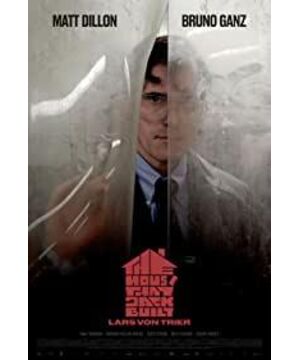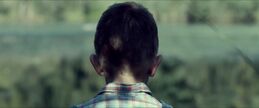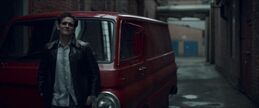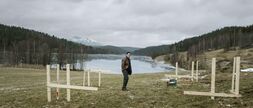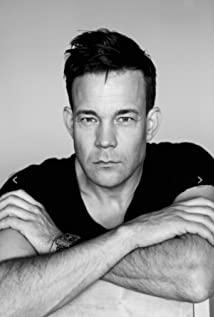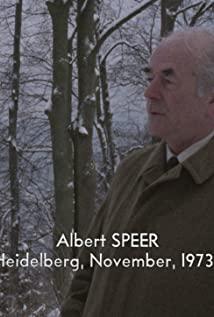Author: csh
This article first appeared in "Muweier"
Lars von Trier is a frequent visitor to the film festival and an outlier in the eyes of movie fans. Every time he appears, it will almost certainly be accompanied by a big news.
Sometimes, the big news is not only about his movies, but also his unusual actions. In 2011, Lars von Trier was "banned" by Cannes for a long time for his inappropriate remarks about the Nazis and Jews.
However, after a lapse of seven years, he returned to Cannes with his new work "This House Is Made By Me". Whether it was his return to Cannes itself, or his new work that lived up to expectations, there was a whirlwind in the film industry. What does it mean to "live up to expectations"? This of course means that "This House Is Made By Me" still inherits the von Trier-style overweight taste, and is even better.
However, if it is only a heavy taste, then this is just a B-rated film. The reason why Lars von Trier can be ranked among the masters of art film is because he framed these "anti-human" content in a complex and sophisticated structure, and realized this through such works The deepest sin on the planet.
This article will analyze the unique narrative structure of this film. In fact, the form of "This House Is Made By Me" is inseparable from the content. To some extent, the form of this film even determines its height.
In this film, Lars von Trier adopts a composite narrative structure. At the same time, its two components are almost exposed.
First of all, we can find the first component of this structure from the title of "This House Is Made By Me". The original English name of "This House Is Made By Me" is "The House That Jack Built", which means "The House That Jack Built". It comes from a British folk song "This Is the House That Jack Built" (This Is the House That Jack Built).
The first three sentences of this ballad are: "This is the house that Jack built; this is the malt that was placed in the house that Jack built; this is the mouse that ate the malt that was placed in the house that Jack built. ……"So on and so forth.
This ballad combines different information through a layered structure of clauses. In fact, what it tells is not the story of Jack's house, but the relationship between these different elements.
However, in the third sentence, the connection between the "mouse" element and the "Jack" element is already very fragile. As clauses continue to be superimposed, the connection between new and old elements will become weaker and weaker.
Lars von Trier used this ballad in his feature film debut "The Elements of Crime". In the film named "This House Is Made By Me", he directly adopted the narrative method of this folk song.
Jack has a goal that has been haunting him all the time-building a house. He used what we seem to be very far-fetched: church architecture and artistic materials to connect architecture and murder. Later, he used the excuses of "poetry" and "politics" to carry out his brutal massacre.
These excuses, and the connection between different elements, have become more fragile and meaningless, just like the introductory phrase "that" in that ballad, as the film develops. We know that Jack wants to build a house, but we don't know the ins and outs of this goal. We saw him killing people continuously, but we don't know how he met and selected these victims.
To some extent, "This House Is Made By Me" inherited the technique of this traditional folk song, but this film does not look as simple and unorganized as the folk song. This is because he also stole the teacher from another place: there is no doubt that it is Dante's "Divine Comedy".
Whether it’s "Vigi" who talks with Jack from beginning to end (in "The Divine Comedy", Virgil is Dante’s guide), or a parody of Eugène Delacroix’s masterpiece "Dante’s Ferry" The oil painting-like shots of "All have a clear reference to this classic work.
The narrative structure of "Divine Comedy" has two obvious characteristics. One is meta-narrative. In addition to the main line of the "Divine Comedy" story, there are also many other stories, large and small, each containing its own specific text system.
In "This House Is Made By Me", we also see a lot of meta-narratives and meta-images. We can see the return of Lars von Trier’s other films, we can see images of the famous Bach player Glenn Gould playing the piano, and we can see the poems "Tiger" and "Tiger" by William Blake. Re-interpretation of Lamb.
The second characteristic of "Divine Comedy" is the interlacing of time structure and space structure. We see that the main line of time for Dante to travel through the Three Realms is cut off by a clearly divided space scene. These different spaces are independent of each other, and we can even see the juxtaposition of different time cues in a certain space.
Although movies are different from literature, they naturally carry this narrative effect. But in the hell section at the end of "This House Is Made By Me", we see Jack staring at the maiden scene in his childhood memories in the same screen space, which directly responds to the space-time effects in "The Divine Comedy".
These characteristics of the narrative structure of "The Divine Comedy" have assimilated moments and eternity in the original work, allowing different histories and cultures of mankind to coexist. But in "This House Is Made By Me", due to the existence of the folk songs, they actually deepen our sense of despair.
If Lars von Trier placed substantive elements in the structure of ballads, then he used the structure of "Divine Comedy" to place elements similar to connecting objects and clause guiding words.
It may be a little abstract in this way, we can go back and continue to analyze the examples we mentioned when explaining the form of folk songs. With the development of the film, the relationship between the so-called art and murder has become weaker and weaker, but he still adopts the "Divine Comedy" meta-narrative, inserting elements that are external to the film into it.
As a result, the originally only seemingly thin and meaningless connection suddenly appeared absurd and ridiculous. Lars von Trier used black humor to blend common British folk songs with outstanding literary classics.
One of the most surprising is that if we are to describe one of the two as "ridiculous", most people will undoubtedly choose the former. In "This House is Made by Me", the structural feature of "The Divine Comedy" is instead the part that creates absurd effects.
In his heavy-taste passages with strong symbolic meaning, "building a house" may have become a metaphor for religion, politics, war, art, and even human humanitarian goals.
However, "This House Is Made By Me" is the most "tasteful", perhaps his subverting the classic narrative structure. It implies that human beings will always go round and digress; always be separated by a layer of glass, unable to touch the other shore in front of them; always fall on the cliff leading to hope and fall into the deepest hell.
View more about The House That Jack Built reviews


